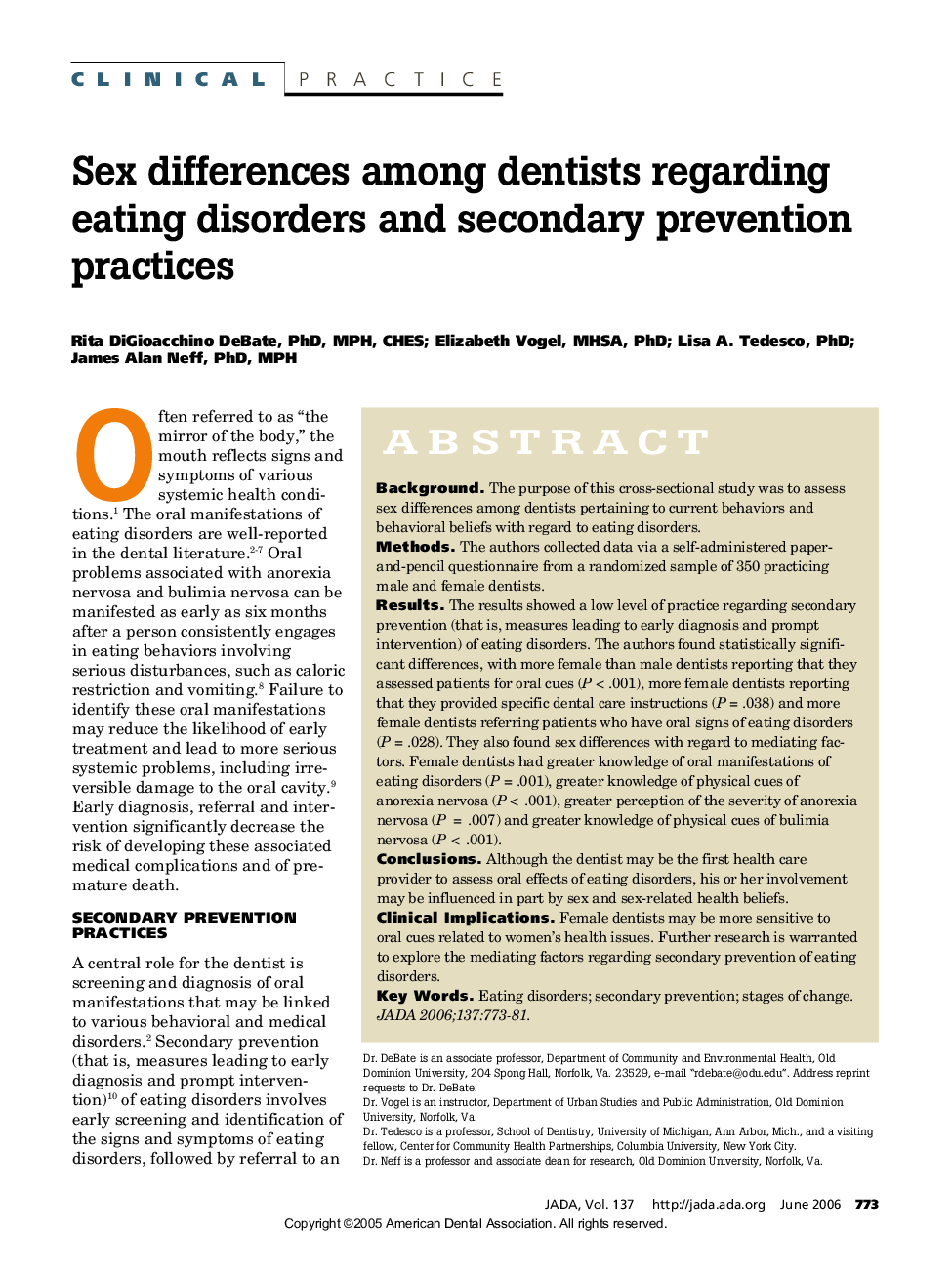| Article ID | Journal | Published Year | Pages | File Type |
|---|---|---|---|---|
| 3140263 | The Journal of the American Dental Association | 2006 | 9 Pages |
ABSTRACTBackgroundThe purpose of this cross-sectional study was to assess sex differences among dentists pertaining to current behaviors and behavioral beliefs with regard to eating disorders.MethodsThe authors collected data via a self-administered paper-and-pencil questionnaire from a randomized sample of 350 practicing male and female dentists.ResultsThe results showed a low level of practice regarding secondary prevention (that is, measures leading to early diagnosis and prompt intervention) of eating disorders. The authors found statistically significant differences, with more female than male dentists reporting that they assessed patients for oral cues (P < .001), more female dentists reporting that they provided specific dental care instructions (P = .038) and more female dentists referring patients who have oral signs of eating disorders (P = .028). They also found sex differences with regard to mediating factors. Female dentists had greater knowledge of oral manifestations of eating disorders (P = .001), greater knowledge of physical cues of anorexia nervosa (P < .001), greater perception of the severity of anorexia nervosa (P = .007) and greater knowledge of physical cues of bulimia nervosa (P < .001).ConclusionsAlthough the dentist may be the first health care provider to assess oral effects of eating disorders, his or her involvement may be influenced in part by sex and sex-related health beliefs.Clinical ImplicationsFemale dentists may be more sensitive to oral cues related to women's health issues. Further research is warranted to explore the mediating factors regarding secondary prevention of eating disorders.
